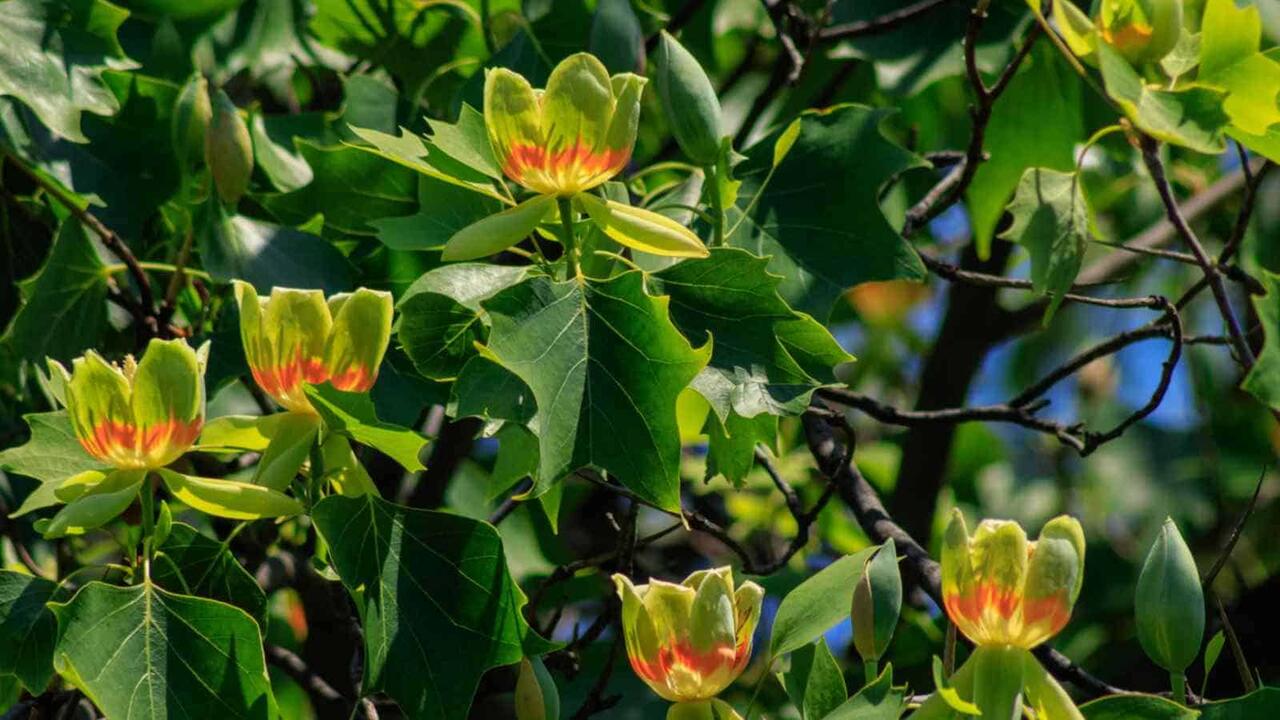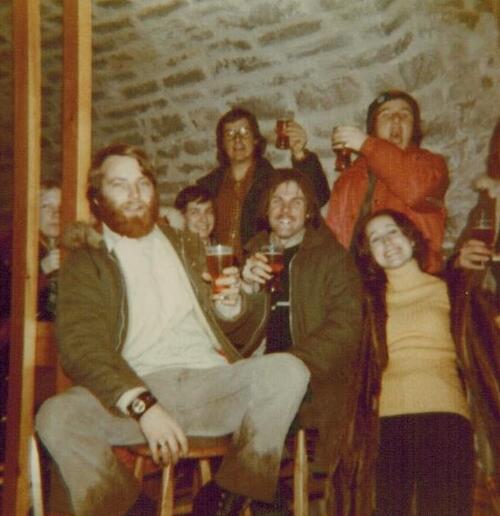
“Congeniality, comradery and laughter”
Alumni from the Planning class of 1974 reminisce about antics and explain the special bonds that began at UWaterloo

Alumni from the Planning class of 1974 reminisce about antics and explain the special bonds that began at UWaterloo
By Megan Vander Woude Office of AdvancementAcross from the Environment 3 building, you can find a tulip tree. To most passersby, it’s just one of the many trees and foliage you can admire in that area of campus, but to the Planning class of 1974, it’s incredibly meaningful.
At their 40th reunion, the class gathered around the tree for the first time, which they planted in memory of classmates who have passed away. On Saturday, June 1, 2024 — 10 years after that first gathering — they will meet at the tulip tree again to reconnect with life-long friends and share fond memories. It’s an important ritual in their reunions.
“We gather there and reminisce about these people who were part of us,” says Sue Metcalfe (BES ’74). “It’s memories, heart-felt stories. A time for reflection and appreciation.”
There is no shortage of stories. Sue and two of her classmates, John Jung (BES ’73) and Gord Knox (BES ’74), all admit to some outrageous antics — peanut wars at the ES Red Garter Pubs, too much fun starting too early at Oktoberfest, and driving Frank’s Volkswagen into a snow-covered rock at Boo’s cottage (many classmates had nicknames still used today at their reunions and in emails).
“If I knew my kids were doing this sort of stuff …,” John says.
One story that always seems to come up at reunions is, “the trip to Quebec City.” John explains that a group of classmates took a train trip to Quebec City. Taking the train freed them up to imbibe on the way there — to the point where one classmate announced, “This is Quebec City! I’m here!” a full day after they’d arrived.
 The trip to Quebec City is a fond memory for many of the Planning '74 classmates.
The trip to Quebec City is a fond memory for many of the Planning '74 classmates.
Some stories involve more wholesome activities. Gord recalls a project where everyone had to build a model for an urban design course. Being broke students, most of the class went dumpster diving for materials. But John took a different approach: “John brings in this thing and it looks like it’s professionally built! We’re looking at his Ferrari, and we’ve all got these beat up Volkswagens beside it. Turns out, [John] was smart enough to go to a local hardware guy and say, ‘If I put your sign somewhere on my model, will you give me materials for free?”
Gord still jokes that it wasn’t fair for John not to tell anyone about his free materials, but readily admits that John was just smarter and more innovative (than the rest of the “scrap collectors” and “dumpster divers.")
“These are the types of stories we tell at our reunions. The whole class is just in stitches,” Sue says.
Sue, John and Gord are all excited to reunite for their 50th anniversary this year. Every five years, their classmates travel from across Ontario and Canada — Calgary, White Rock, Vancouver and even Whitehorse — for the weekend-long event.
Each time, they follow a similar format. They meet on Friday for lunch and a tour in the local community — like the Perimeter Institute, or the Tannery building. This year, they’ll tour Catalyst 137, the world’s largest internet-of-things manufacturing space. Then, they’ll see a screening of the Rock This Town documentary at Princess Cinema and meet its producer before heading to the Grad House for their traditional first-night gathering and sharing of stories.
On Saturday, Sue says they will join the on-campus Reunion 2024 celebrations. They plan to rediscover their UWaterloo community with a tour of the Environment buildings, followed by the tulip tree remembrance, “Tales from the Trenches” in their favourite Environmental Studies Lounge, and a formal 50th reunion dinner during the evening.
“We have always invited our professors to our reunions,” said Gord. “We had great professors who had open doors, and shared their libraries, time, knowledge and lives with us.” This year Planning ’74 will honour one of its favourite professors during its remembrance.
 At their 40th reunion, the classmates were able to reconnect with three beloved professors: Cam Kitchen, Saul Herzog and Larry Martin.
At their 40th reunion, the classmates were able to reconnect with three beloved professors: Cam Kitchen, Saul Herzog and Larry Martin.
As the years pass, the reunion traditions garner new meaning.
“At our 45th, we began to notice that people were getting older,” John says. “And we wanted to connect more often. During COVID we did a Zoom call with everyone, and that was the last time we had the opportunity to get together with classmates like Jules [Judith Mackenzie], Janet [Babcock] and Lemmer [Glenn Schnarr]. I think we all recognize how important it is for us to reconnect physically.”
Sue, John and Gord all believe that their connections with classmates have deepened and changed over the years. It’s not just about the friendships they had as students, or the adventures they got up to.
Those things created the seeds for deep, life-long connections.
“The business of studying and learning things became so secondary to just being with some really great people,” Gord says. “There’s pride in watching so many of them become so successful in the places they went, and see people go into different careers. Who would have thought this would happen when we were away from home, discovering the effects of beer and other liquids and being ‘stupid’ together?”
It’s a special bond that has grown stronger over time, despite physical distance. For John, reunions are an opportunity to look back at their time together, but also celebrate their lives after graduation: “We have this amazing opportunity to look back 50 years with people we know and love and say, ‘Look what you’ve become and what you’ve done! Isn’t this great?’”
“A lot of people were friends in school, but we have a different relationship at the reunions,” Sue explains. “There’s just so much congeniality, comradery and laughter.”

Read more
The volunteer-led Ottawa Alumni Chapter will offer new personal and professional opportunities for local alumni

Read more
Nancy McCalder (BA ’78) shares memories from campus as she plans her 50th class reunion

Read more
As they celebrate a milestone anniversary, alumni look back on an unforgettable event in Waterloo's history
The University of Waterloo acknowledges that much of our work takes place on the traditional territory of the Neutral, Anishinaabeg, and Haudenosaunee peoples. Our main campus is situated on the Haldimand Tract, the land granted to the Six Nations that includes six miles on each side of the Grand River. Our active work toward reconciliation takes place across our campuses through research, learning, teaching, and community building, and is co-ordinated within the Office of Indigenous Relations.